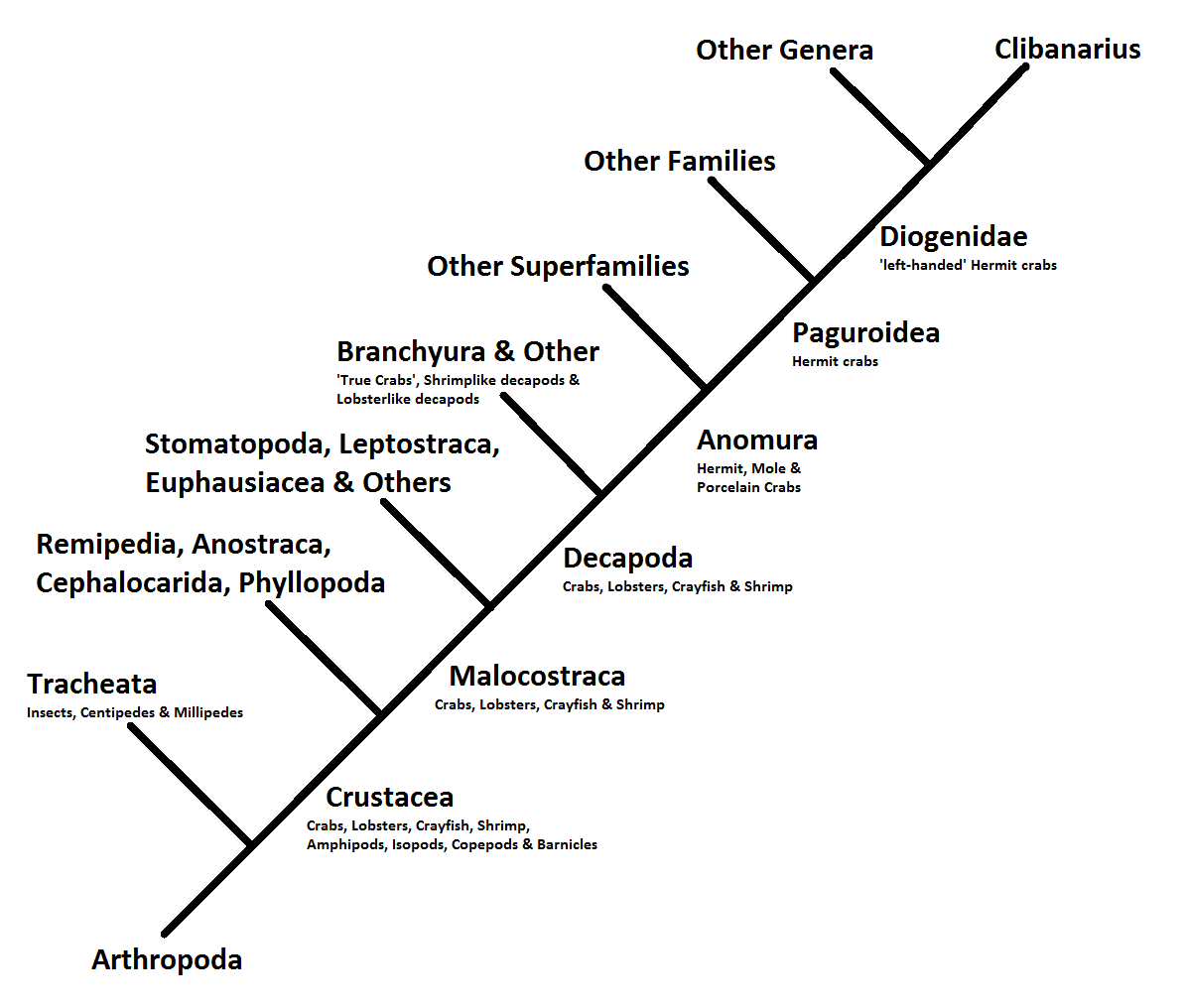Evolution & Phylogeny
Clibanarius longitarus belongs to the phyla arthropoda, the largest group of metazoa containing within them a substantial 80% of all animal species. This group is characterised by having segments, tagmatization of those segments, an exoskeleton, cephalization of the body, and paired, jointed, segmental appendages, (Ruppert, Fox & Barnes, 2004.)
Within arthropoda lies the subphylum crustacea, another diverse and abundant group. Crustacean heads are made of five segments, each with a paired appendage. Antennae are situated on the second segment, and a pair of saccate nephridia are located on the second and fith head segment. All appendages are biramous, (Ruppert, Fox & Barnes, 2004.)
Hermit crabs belong to the class malacostraca, along with other crabs, lobsters, crayfish and shrimp. This taxon is defined by having 8 segments in their thorax and 6 in their abdomen. They also differ from other crustaceans (exept remipedia) in that they have abdominal appendages, (Ruppert, Fox & Barnes, 2004.)
The infraorder anomura, is found within the order decapoda. Anomura are a taxon that consists of hermit crabs, and are believed to be the transitional state between shrimplike decapods, (penaeidea, stenopodidea, and caridea), and crablike decapods, (brachyura), (Ruppert, Fox & Barnes, 2004.)
Within anomura, this species belongs to the superfamily paguroidea, characterised by having an asymetrical body plan as well as a soft abdomen that is dextrally twisted, (Tudge, Asakura & Ahyong, 2004.)
The Blue striped hermit crab belongs to a family of hermit crabs called diogenidae. The defining feature of this group is that unlike other hermit crabs, the left claw is larger than the right. Despite this defining feature, only around half of the species within this group have a larger left cheliped, (Tudge, Asakura & Ahyong, 2004.)
Finally, within diogenidae, lies the genus Clibanarius. These species are normally found in tropical regions of the world, mainly in mangrove swamps, (see Figure 23)(Tudge, Asakura & Ahyong, 2004.)

Figure 23- Phylogenic tree of Clibanarius longitarus (Source: Diagram created by Author, (2014), using information from Ruppert, Fox & Barnes, 2004; Tudge, Asakura & Ahyong, 2004) |